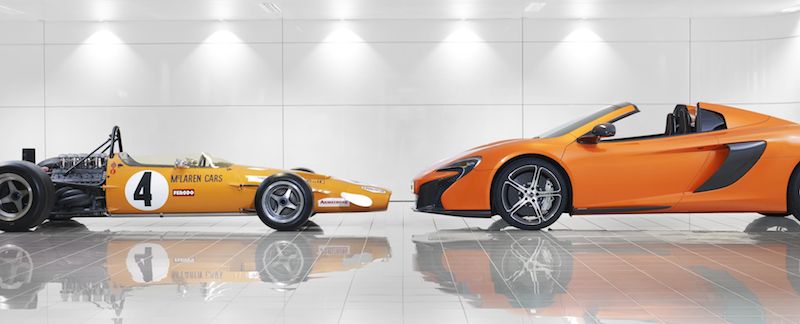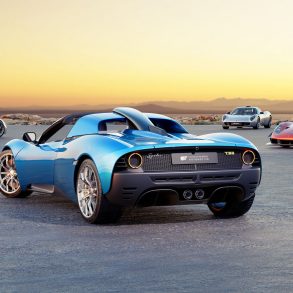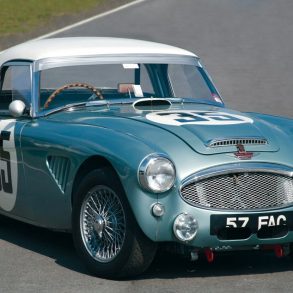The philosophy of constantly assessing, developing and re-engineering through the life cycle of a Formula 1 car was fundamental in achieving the success that established McLaren as a race winner. The development that led to the M7C is testament to the principles that were established by Bruce in those early days in the evolution of McLaren.
On the afternoon of Sunday, 9 June 1968, Bruce McLaren, driving an M7A Formula 1 car bearing his name, won the first of what has become a long list of Grand Prix victories for McLaren. This victory was at the notorious Belgian circuit, Spa-Francorchamps.
In just two years since Bruce drove the first McLaren-designed and built Formula 1 Grand Prix car, the M2B, at the Monaco Grand Prix in 1966, the team ethos of designing and building cars around a resilient chassis, supported by a programme of rapid and continuous improvement, had propelled the fledging manufacturer to the front of the Formula 1 grid and confirmed their growing status as a world-class team. This was not the only success through the 1968 season with the M7A, Bruce had already won the non-championship Daily Mail Race of Champions at Brands Hatch, UK in March and his fellow Kiwi team mate, Denny Hulme, claimed victory on the non-championship Daily Express International Trophy race at Silverstone, UK a month later. There were two additional Grand Prix victories before the end of the season with Denny taking both the Italian and Canadian races, Bruce finished second behind Denny in Canada to record the first McLaren 1-2. Since then, the team has claimed 46 further 1-2 finishes in Formula 1.
Throughout the 1968 season, the M7A was developed and improved in all areas to increase performance, drivability and reliability. The positive effects that aerodynamics could have on overall lap time were just beginning to be understood, and different wing configurations were trialed throughout the season as part of this relentless development programme.
The natural progression of this development was the 1969 M7B. A single chassis, chassis 3, believed to be Bruce’s winning M7A from the previous year’s Belgium GP, was modified in an attempt to optimise the performance of the rear tyres by relocating the fuel cells into pontoons incorporated into either side of the chassis. The resulting M7B-1 was used in a limited number of races at the start of the year before being sold to an independent team, Antique Automobiles, who ran the car from the Spanish GP.
Only four races later, at the German GP on the treacherous Nürburgring, the car was involved in a collision with a stray wheel causing the car to flip upside down. The resulting damage was considered too great to economically repair and the car was destroyed. M7A-3 that scored the first ever GP win for McLaren as a constructor, and the last for Bruce as a Formula 1 driver, was lost forever.
This brings us to the final chapter in the chassis developments of the M7 family of Grand Prix cars, the M7C. Taking the lessons learned in the development of the M10A Formula 5000 customer car, the original ‘bath tub’ chassis design of the M7A was re-engineered into a full monocoque ‘cigar tube’ intended to increase lateral stiffness and driver safety. Only one example of the M7C chassis was built to accommodate the Ford DFV engine. Alfa Romeo commissioned another chassis, M7D-1, as part of a development programme for their 3.0-litre V8 engine.
[Source: McLaren]










